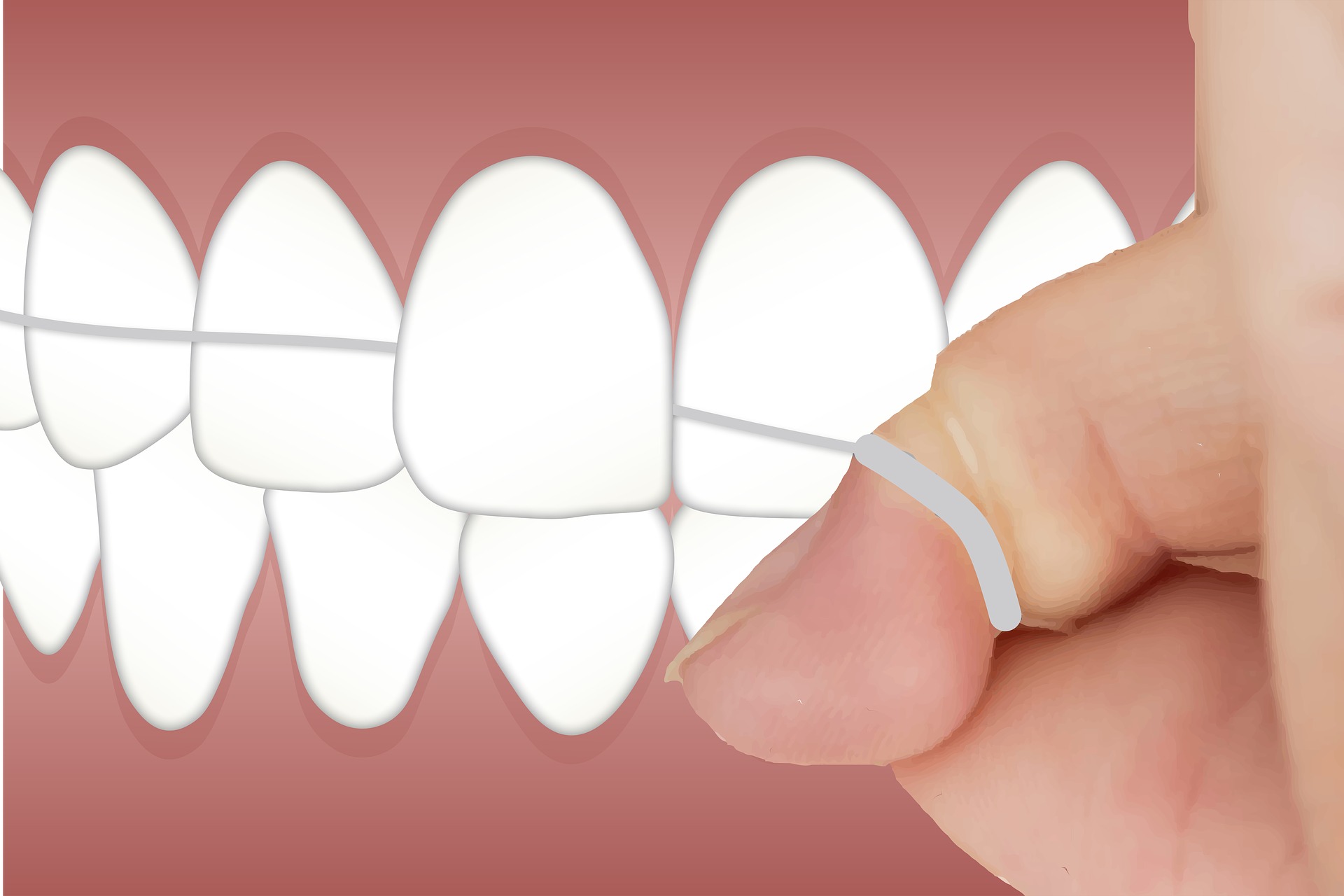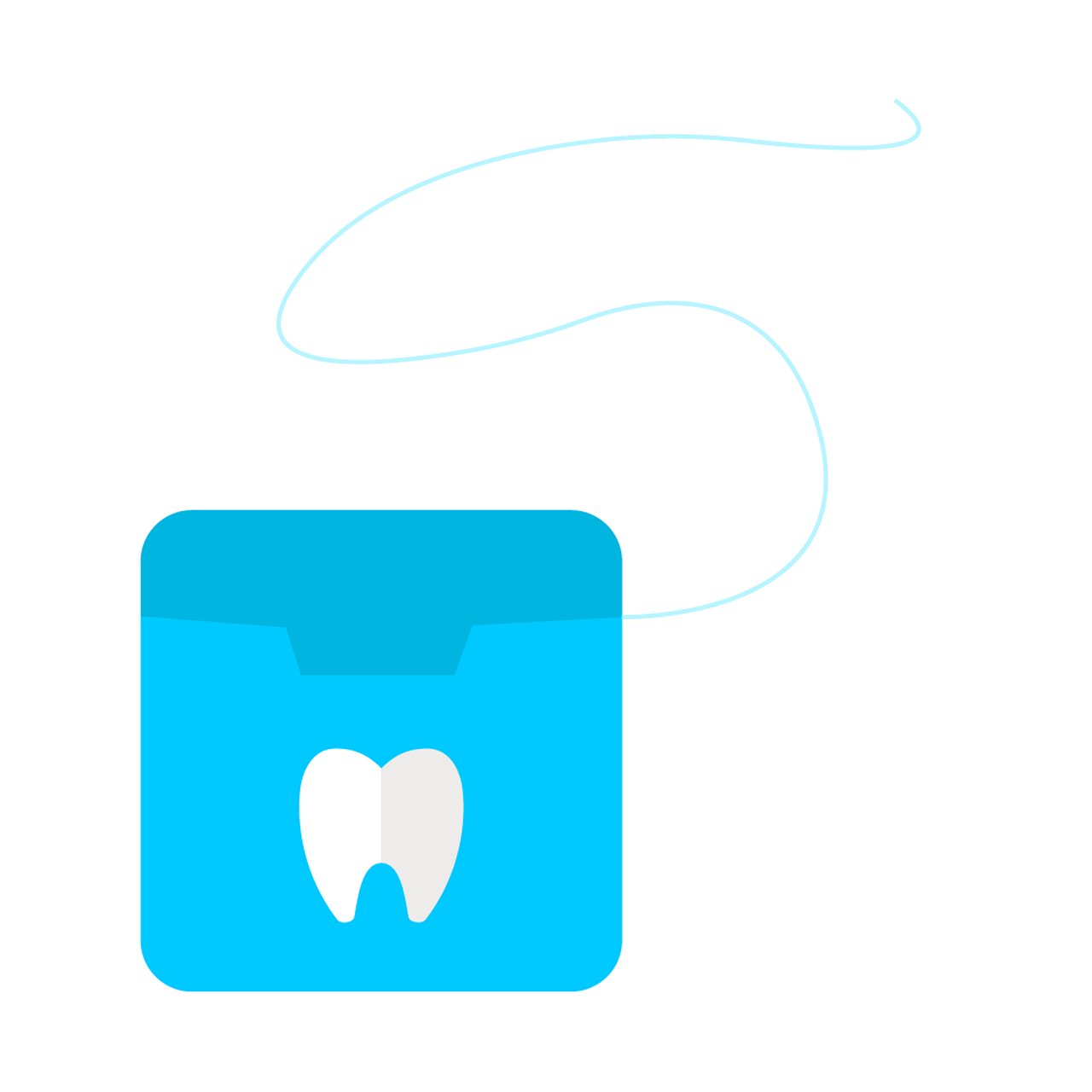Don't forget to floss
All of us want healthy teeth but what many of us forget is that frequent brushing by itself is not enough. Though the careful use of a toothbrush is an effective way to remove dental plaque, the bristles unfortunately only reach about 70% of any given tooth's surface area. The remaining 30% are located on the sides of teeth and since toothbrushes barely reach into embrasures (the spaces in between teeth), they do not effectively remove the pesky plaques that can accumulate in those places. To effectively combat these plaques and to prevent the buildup of dental calculus, dentists recommend the regular use of dental floss (ideally every day after brushing your teeth). Unfortunately, as of today, only a fairly small part of the population of the German-speaking realm heed this advice (<=1%).
How many people use dental floss?
One of the most commonly cited reasons for the rare use of dental floss is because it is quite cumbersome to handle. Many people have difficulties with properly tightening the floss between their fingers, which is a prerequisite for its successful use to remove plaques. Also, new users are often quite over-eager, which can lead to bleeding gums. To make the use of dental floss a bit easier, dentists have developed the so-called "threading technique", which consists of 3 simple steps:
- Step 1: Take ~50 cm dental floss and wind it uniformly around 2 fingers (one of which is usually the index finger) until a distance of only 2 cm remains between fingers
- Step 2: Thread the dental floss between 2 teeth and carefully move your fingers up and down to remove any existing plaques. Extra Tip: Don't forget the backsides of the teeth at the back of your jaws
- Step 3: Back to step 1 and repeat the process on the adjacent tooth
To make daily flossing even easier, one can get a so-called dental floss holder which is basically a small and fairly compact device made out of plastic that holds the dental floss in the optimal position for you. Such holders come in many different shapes and forms and can either be for one-time use or reusable.

What kinds of dental floss can I get?
Dental floss can be either multi-threaded and made out of nylon or single-threaded and made out of PTFE (polytetrafluorethylen oder teflon).
Multi-Threaded Nylon Dental Floss: Consists of multiple nylon threads that may or may not be coated with wax and that are available in many different flavors (e.g., mint). A potential drawback of this type of floss is that it can sometimes unravel or tear when used between teeth that are very close to one another.
Multi-Threaded Nylon Dental Floss: Consists of multiple nylon threads that may or may not be coated with wax and that are available in many different flavors (e.g., mint). A potential drawback of this type of floss is that it can sometimes unravel or tear when used between teeth that are very close to one another.
- Non-Waxed Dental Floss: While it can tear relatively easily, it is ideal to determine the quality of dental care since it produces a squeaking sound when it is moved up or down a clean tooth. This kind of dental floss can also be impregnated with other kinds of active ingredients.
- Waxed Dental Floss: Can be moved between teeth more smoothly and, thus, poses a lower of causing damage to the gum line. Sometimes, wax fragments may get stuck in between teeth but they can fortunately be easily cleaned out via careful brushing.
Single-Threaded PTFE Dental Floss: Significantly more resistant to tearing than nylon dental floss and easier to more between teeth.
Superfloss: The best option for thoroughly cleaning permanent tooth replacements, dentures, and braces. Also ideal for taking care of baby (milk) teeth and for cleaning out wider gaps between teeth.
As long as it is used regularly and thoroughly, virtually every kind of dental floss can produce excellent results. A key formula to remember: toothbrush + dental floss = top dental health.
Superfloss: The best option for thoroughly cleaning permanent tooth replacements, dentures, and braces. Also ideal for taking care of baby (milk) teeth and for cleaning out wider gaps between teeth.
As long as it is used regularly and thoroughly, virtually every kind of dental floss can produce excellent results. A key formula to remember: toothbrush + dental floss = top dental health.

In the meantime, we would love to hear from you – please leave any thoughts and feedback in the comment box below and join our blog via free subscription whenever you like.


